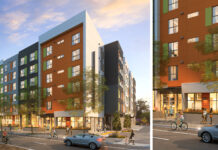![Foreclosures fueled racial segregation in US]](https://indiapost.com/wp-content/uploads/2015/05/Foreclosures-fueled-racial-segregation-in-US.jpg) WASHINGTON, DC: Some 9 million American families lost their homes to foreclosure during the late 2000s housing bust, driving many to economic ruin and in search of new residences. Hardest hit were black, Latino, and racially integrated neighborhoods, according to a new Cornell University analysis of the crisis.
WASHINGTON, DC: Some 9 million American families lost their homes to foreclosure during the late 2000s housing bust, driving many to economic ruin and in search of new residences. Hardest hit were black, Latino, and racially integrated neighborhoods, according to a new Cornell University analysis of the crisis.
Led by demographer Matthew Hall, researchers estimate racial segregation grew between Latinos and whites by nearly 50 percent and between blacks and whites by about 20 percent as whites abandoned and minorities moved into areas most heavily distressed by foreclosures.
Forthcoming in the June print issue of the American Sociological Review and recently published online, the paper, “Neighborhood Foreclosures, Racial/Ethnic Transitions, and Residential Segregation,” noted that the crisis spurred one of the largest migrations in U.S. history, changes that could alter the complexion of American cities for a generation or more.
“Among its many impacts, the foreclosure crisis has partly derailed progress in achieving racial integration in American cities,” said Hall, assistant professor of policy analysis and management in Cornell’s College of Human Ecology.
Examining virtually all urban residential foreclosures from 2005 to 2009, Hall and co-authors find that mostly black and mostly Latino neighborhoods lost homes at rates approximately three times higher than white areas, with ethnically mixed communities also deeply affected. They estimate that the typical neighborhood experienced 4.5 foreclosures per 100 homes during the crisis, but the figure rises to 8.1 and 6.2 homes in predominately black and Latino areas, respectively, while white neighborhoods lost only 2.3 homes on average.
As an avalanche of foreclosures buried minority and racially mixed communities, their white populations shrank and black and Latino populations swelled. Researchers found that white households were significantly more likely to leave areas with high foreclosure rates, while black and Latino families entered these neighborhoods out of necessity or to seek newly affordable housing options.
“Not only were white households less likely to be foreclosed on, but they also were among the first to leave neighborhoods where foreclosures were high, particularly those with racially diverse residents,” said Hall.
Co-authored by Kyle Crowder, professor at the University of Washington, and Amy Spring, assistant professor at Georgia State University, the paper notes racial integration slowed most sharply in western and southern cities, locations such as Atlanta, Las Vegas and Sacramento, where minority populations suffered a rash of foreclosures.
By contrast, segregation in northeastern and Rust Belt cities was less affected by the crisis, likely due to relatively few foreclosures and more deeply entrenched ethnic divides.
The research was funded, in part, by the Cornell Population Center, Cornell’s Center for the Study of Inequality, Cornell’s Institute for the Social Sciences, and the University of Washington.
India Post News Service






